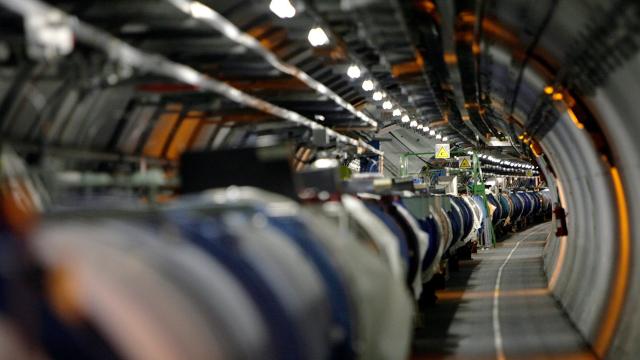A task force organised by the American Institute of Physics, a not-for-profit organisation made up of other American physics societies, has released the results of a study into why African American students are persistently underrepresented in receiving undergraduate degrees in physics and astronomy.
The National Task Force to Elevate African American representation in Undergraduate Physics & Astronomy, or TEAM-UP, surveyed students and department chairs, interviewed African American students, visited five competitive college physics departments, and reviewed existing literature in order to determine what factors were contributing or detracting from the students’ success in physics. They identified five main influences: a sense of belonging in the community, self-perception as a physicist, academic support, personal support, and the priorities of existing physics leadership.
The task force made a series of “far-reaching and challenging” recommendations “requiring philosophical and practical changes in the way the community educates and supports students.” Their overall goal “is to at least double the number of bachelor’s degrees in physics and astronomy awarded to African Americans by 2030.”
“[S]tubborn challenges of under participation by African Americans within physics remain,” Shirley Malcolm, senior adviser at the American Association for the Advancement of Science and director of STEM Equity Achievement Change initiative, wrote in the report’s foreword. “For bachelor’s degrees in physics for African Americans, the needle has hardly moved since 2006.”
Malcolm’s 2006 article described the sorry state of diversity in physics back then: Black Americans received 3.5 per cent of the bachelor’s degrees in physics in 2003, and this percentage has barely changed since then, despite the overall number of physics bachelor’s degrees doubling in the past 20 years.
These numbers were hardly a surprise to those involved in compiling the report. “For me it was not new information, particularly because of my own lived experience as a black student in physics, who went through my entire academic career not having a black instructor in physics, being the only black student in many of my physics classes,” Brian Beckford, assistant research scientist and former Presidential Postdoctoral Research Fellow at the University of Michigan, told Gizmodo. Beckford was previously manager of the American Physical Society’s Bridge Program, an initiative meant to support underrepresented students seeking a Ph.D. in physics through mentorship and transition programs.
The task force report notes that “African American students have the same drive, motivation, intellect, and capability to obtain physics and astronomy degrees as students of other races and ethnicities,” but are opting for degrees in other fields they perceive will be more welcoming or financially lucrative. The reason is systemic; the underrepresentation of African American students in physics and astronomy, at the highest level, is due to a system that doesn’t offer these students a supportive environment, as well as the large financial challenges faced by both the students and the departments that have historically supported them.
The report recommended that physics departments should “establish and consistently communicate norms and values of respect and inclusion through policies, physical spaces, programmatic offerings, and all forms of communication with students.” They also suggested that departments diversify their faculty across race, ethnicity, gender, and other social identities, provide mentorship opportunities that focus on underrepresented students, and encourage department chairs to set up norms in their department that value inclusion and incentivise faculty members who actively support underrepresented students.
The task force also points out the success of historically black colleges and universities (HBCUs) at supporting African American students—but at the same time, HBCUs saw a 42 per cent decline in their federal funding for each full-time student from 2003 to 2015, while their endowment is 70 per cent that of comparable institutions, according to the report. The report estimates that the physics community has lost 150 African American students annually from HBCUs alone due to the challenges that these schools face. They suggested that a consortium of physical science societies raise a $US50 ($74) million endowment for marginalised and underrepresented students in physics and astronomy, with an interim fundraising goal that these societies raise $US1.2 ($2) million annually to lessen the debt for African American bachelor’s degree students.
Scientists not involved in the report’s preparation were happy to see its results. “More than a decade after the alarm was first sounded by task force member Dr. Quinton Williams, I’m glad careful attention is being paid to the worrisome decline in black students earning undergrad degrees in physics,” Chanda Prescod-Weinstein, assistant professor in physics at the University of New Hampshire, told Gizmodo in an email. “‘Diversity and inclusion’ is a popular talking point, but as HBCUs’ physics departments have been left to struggle, so have black physics students. I hope that the community will recognise this trend as the crisis that it is, and I hope close attention will be paid to the recommendations regarding HBCUs, which have historically been there for black scholars when other institutions refused to acknowledge our humanity.”
Beckford told Gizmodo that TEAM-UP’s charge focused specifically on African American students, though he believes that many of the recommendations would benefit other groups of students as well.
The task force encouraged physicists and astronomers to read this report and acknowledge that there’s room for their own departments to better foster African American students.
Science, and physics especially, is a creative field that requires thinking about problems in novel ways. Having more diverse scientists is crucial to advancing research forward. Studies tell different stories of this progress, depending on the group; the percentage of those receiving scientific bachelor’s degrees who identify as Hispanic Americans has increased across fields in the past 20 years, while the percentage of women and black students has stagnated. Including these voices requires creating an environment where they’re welcome.
